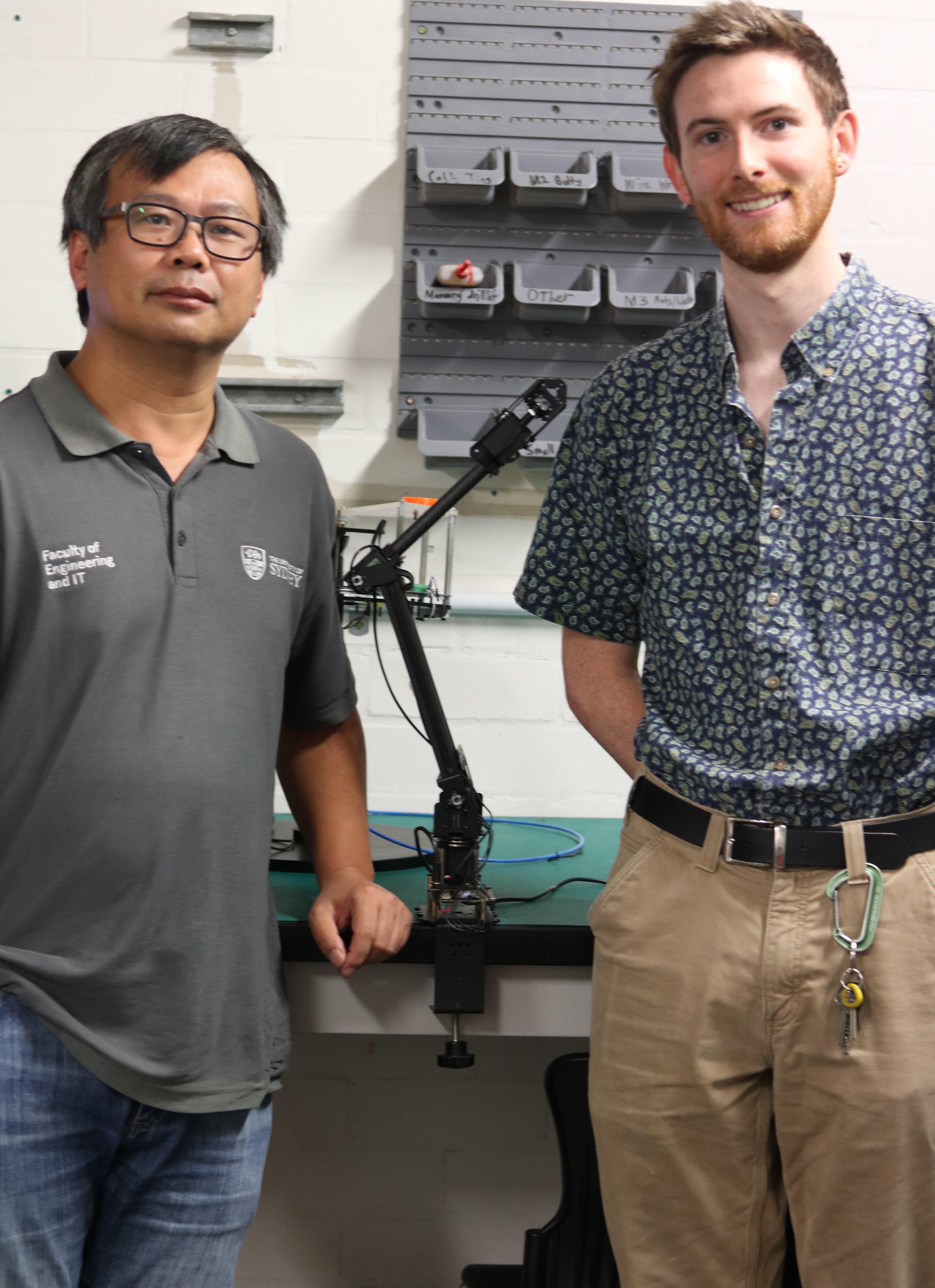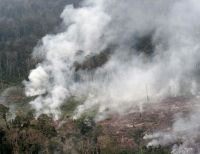
Dr Xiaofeng Wu and Mr Julian Guinane with a robotic arm. Image: Luisa Low, University of Sydney
The new project will develop robotic satellite technologies to reliably connect with other satellites to perform in-orbit repairs and maintenance. It will be led by the University of Sydney and is supported by SmartSat CRC and NSW-based industry partners Abyss Solutions, ANT61, Space Machines Company, Sperospace and Spiral Blue.
Servicing satellites in orbit is challenging due to harsh space conditions, potential risk of damaging expensive assets through collision during docking, and difficulties maintaining stability during maintenance.
Leading the project is Dr Xiaofeng Wu, Senior Lecturer in Space Engineering in the School of Aerospace, Mechanical and Mechatronic Engineering. He said developing foundational Australian ISAM capabilities will help meet Australia’s future sovereign needs and equip local companies with advanced technologies, providing them with advantages in the global ISAM and broader space industry.
“Australia needs to start laying the groundwork now to compete in this vital and emerging $US14.3 billion market. The University of Sydney is ideally positioned to play a leading role in establishing the country’s first integrated set of core capabilities for autonomous orbital robotics. This core capability set will enable Australian industry to undertake advanced, fit-for-purpose, autonomous robotic satellite missions to meet commercial, civil and defence needs," Dr Wu said.
SmartSat CRC Chief Executive Officer Professor Andy Koronios said research into ISAM technologies is critical for Australia to help our local industry join the emerging global supply chain in this increasingly important field.
“With the number of satellites and spacecraft in orbit increasing rapidly, there’s a greater likelihood of malfunctions and collisions. Being able to service and upgrade satellites in-situ, thereby extending their lifespans, will be a crucial capability for governments and the private sector alike,” Professor Koronios said
This project brings together four technology areas into one research project, ensuring an end-to-end approach to address complex challenges facing in-orbit repair and satellite maintenance.














